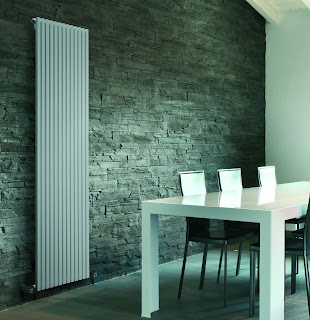Choice can be a gift and a curse, the more we have to choose
from the better? Or too much to choose from and how do you differentiate?
The designer radiator market is now full of choice, many
different products and many different retailers to choose from. Feature
Radiators is a pioneer in this market with 19 years’ experience within the
industry. We were ‘The’ original radiator retailer, only focusing on radiators,
not bathrooms, not kitchens, we specialise in radiators!
Now in a diluted market we try to stand out by continuing
our longstanding ethos of quality products and quality service. All of us here
are self-professed radiator geeks with an eye for interior design.
For you the customer how do you possibly select the best
company to go with? It would be easy enough for us to write, ‘just use us,
simple’, but we think it’s best to justify that somewhat.
If Feature Radiators being the pioneer in the industry isn’t
enough then consider the fact that we do evaluate literally every radiator that
we sell. A strict process is undertaken when we look at a new radiator, we
quite literally feel and touch the product. We obtain a sample in exactly the
same way you would receive it, so we can make sure everything from packaging to
labelling and how the brackets are sent are as we would expect.
Our range is second to none, just because a radiator exists
doesn’t give it the privilege to adorn our website and brochures, we scrutinise
quality, style, heat output, size variants, price, to name a few. What you see
on our website are the best radiators, selected by people with an extensive
overview of the market and in combined years, over 95 years’ experience. The
people here have lived through the start of this designer radiator movement
when there was literally a handful of models available to the now saturated
market with copycat models and inferior models available from one pop up radiator
site to the next.
We actually exist! Seems odd we need to let you know that we
live and breath and we have an office, 10 humans and the UKs largest radiator
showroom, in the online age this is oh so relevant, we champion those points!
Due to the fact we are humans we want to know you, not
necessarily down to the knee complaint from tennis but certainly your next room
décor ideas or any mood board ideas, we work with you sending emails back and
forth, giving you a quick call to check the finer details, we like to
communicate, we don’t disappear into the online abyss at the drop of a hat.
We’re not competitor bashers, as we are confident in what we
do. That said, something we do want you to know is that a good amount of the
first pagers on Google are what we deem as ‘pop up’ retailers, short life span,
set up by larger e commerce companies who in the background sell anything from
light bulbs to online payment systems, they are far from specialist, stacked
high sold cheap. They imitate and we innovate.
01274 567789
















